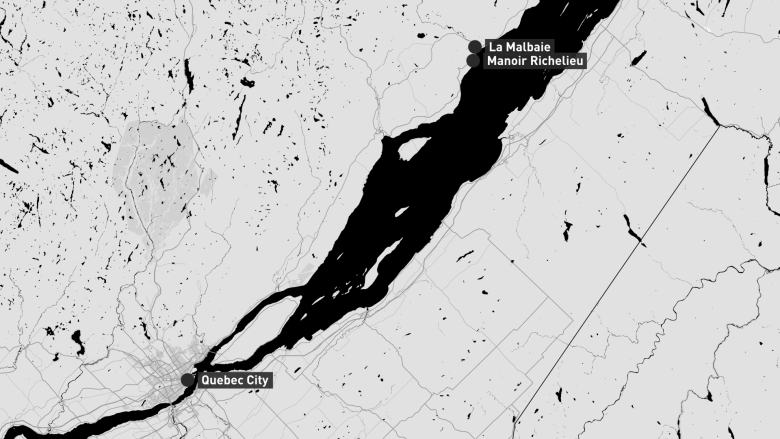The rise and fall of summit protesting: What to expect at the G7 leaders' summit

The Canadian government is spending around $400 million to secure the upcoming G7 leaders' summit in La Malbaie, Que., much of that to keep protesters from disrupting the meeting.
But even if the security bill is on par with previous summits held in Canada, the demonstrations — which begin with a planned march this evening in Quebec City — are unlikely to be.
Recent G7 meetings have seen only small, if spirited, protests. At last year's meeting in Sicily, organizers were expecting crowds of around 3,500 people, but fewer than half as many showed up.
There was little dissent outside the 2016 meeting in Japan, and far fewer than the 10,000 expected outside the 2015 meeting in Germany.
This is a far cry from the massive crowds that gathered in Toronto for a G20 meeting in 2010, let alone the 2001 Summit of the Americas in Quebec City, which attracted as many as 50,000 people.
Smaller crowds are partly a factor of the remote locations preferred by the G7 leaders, who represent the world's major industrialized democracies.
Last year's gathering was held in Taormina, a hilltop town that is a 750-kilometre drive from Rome. La Malbaie, the site of this year's summit, is 140 kilometres northeast of Quebec City and accessible only by one heavily guarded road.
But more modest demonstrations also reflect a shift in focus among the global left since the height of the anti-globalization movement during the late 1990s and early 2000s.
From global to local
While the critiques of global capitalism forged in those years are still relevant to many, experts say summit protesting doesn't bring together the same degree of international co-operation it once did.
"They have become more locally rooted," said Janet Conway, who researches social justice movements at Brock University and is herself a longtime activist. "It seems to me the mobilizations are not as internationally driven."
This week's demonstrations, for instance, are mainly the work of groups based in Montreal and the Quebec City area.
Unlike 2001, which brought activists from across North and South America to Quebec City, there is expected to be little participation from outside Canada.
Large-scale demonstrations take months of preparation and networking. Following the 2008 financial crisis, activist groups around the world had fewer resources to spend on sending delegates to far-flung protests.
Different protest tactics also emerged during the Occupy Wall Street and Arab Spring movements, and some activists began to question whether summit protesting was worth the effort.
"We've seen a shift from protesting against these summits to occupying space, which, in some ways, is much more productive," said George Ciccariello-Maher, a prominent U.S. activist and a political scientist at New York University.
"When you protest a summit, you can disrupt the day's business — but then it likely carries on," he said. "Black Lives Matter and Occupy and other types of grassroots organizing, these movements are more stable in the end and more connected to their communities."
3 days of protest
The centre of the upcoming demonstrations will be Quebec City, though some groups are planning on using the designated free-speech zone that is closer to the summit site in La Malbaie. This evening's march, scheduled to begin at 6 p.m., will rally both the moderate and more radical groups taking part in anti-G7 activities.
The organizers include a provincial environmental group, an Indigenous rights group, as well two local activist organizations.
On Friday, members of a more radical activist network — known as the Réseau de résistance anti-G7 — are planning a "day of disruption." They have declined to speak to the media about their plans.
Then on Saturday, unions, activists and community groups plan to hold a series of events near the Quebec Legislature, including roundtable discussions and a comedy show.
The variety of activities planned for Saturday is an acknowledgement by organizers that summit protesting needs to offer a more dynamic experience than it has in the past.
"We've heard the slogans. There is nothing more boring than showing up and just doing slogans," said Sujata Dey, a trade campaigner with the Council of Canadians who is helping to organize Saturday's protest.
"We need the creativity of people to imagine something different and to feel that we can win. That's how we approached this."
A measure of success?
Even if the crowds later this week are smaller than they've been outside past summits, longtime activists caution that is a poor measure of whether the demonstrations can be considered a success.
"To me, the significance is not the size of the protest in any particular place … it's their persistence," said Conway.
The continued protests outside global summits over the past 20 years has forced new issues onto the agenda, she said, such as the environment, inequality and Indigenous rights.
Whether institutions like the G7 will adequately address these issues, though, remains doubtful in Conway's mind.
"That reality makes these summits really important protest targets," she said. "They provide a moment to signal both to those government leaders — and much more importantly to the larger public — that protest has not gone away."


